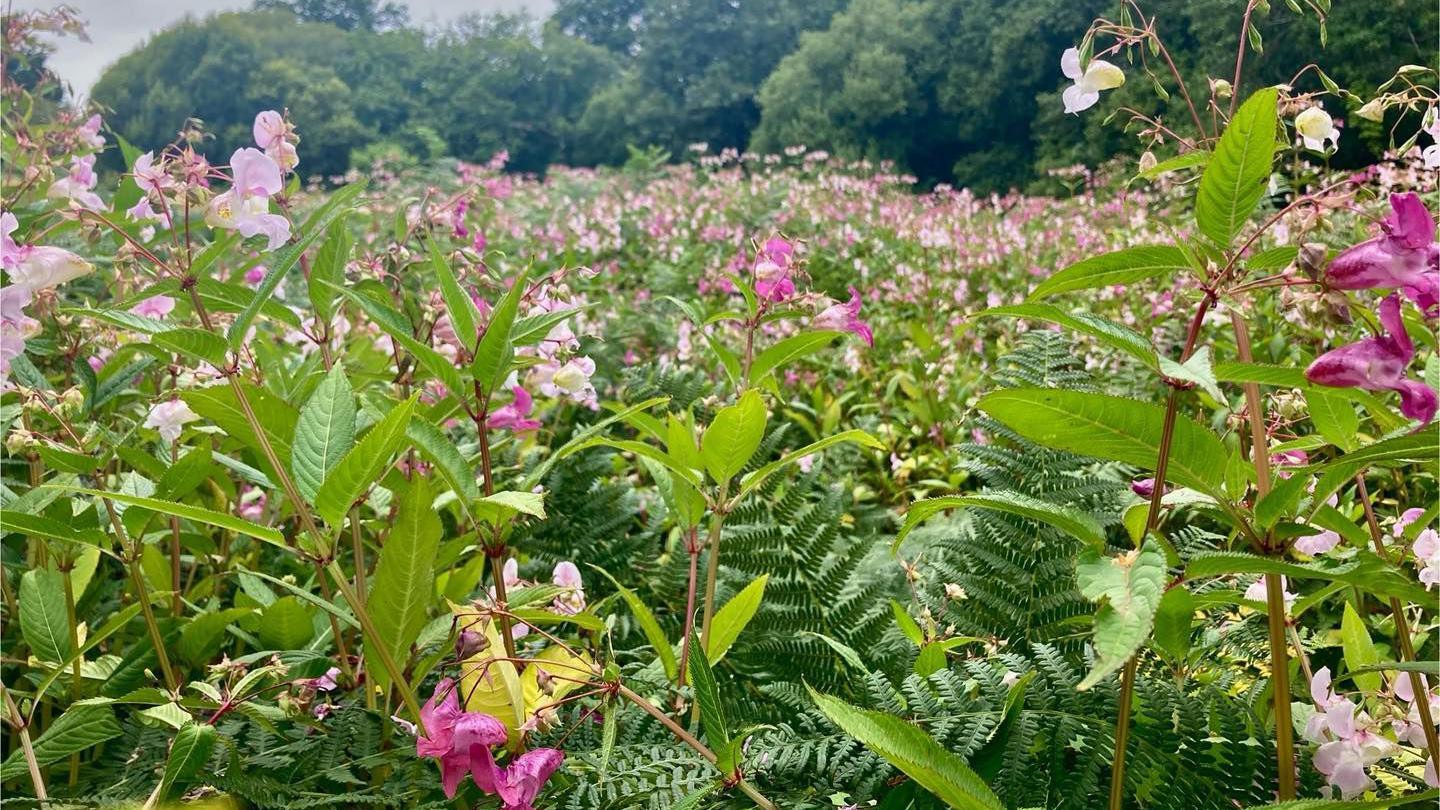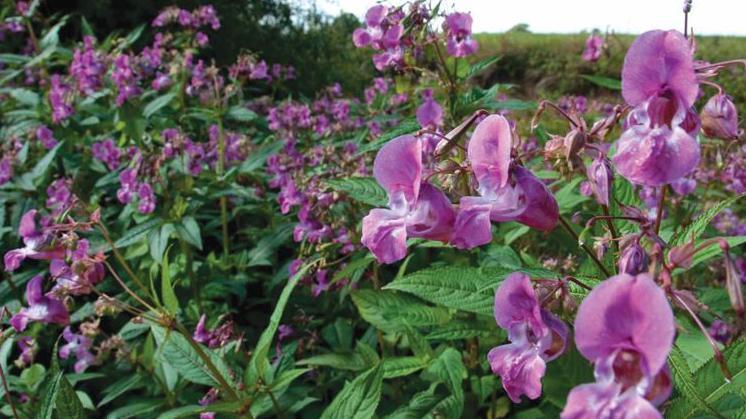'Balsam bashers' clear river's invasive species

Graham Roberts (left) leads the team of "balsam bashers" on the River Lim
- Published
"We got to the field and it was just a sea of pink," said retired conservationist Graham Roberts, who is waging a war on Himalayan balsam.
He says he is retired but each summer he leads a team of volunteer "balsam bashers", ripping out the invasive plant that's damaging the eco system on Dorset's River Lim.
Removing it all seems like an impossible and never-ending task but he's quietly confident they will be able to clear the entire river within five years.
"We have done almost two seasons," he said. "It's challenging but we will carry on as long as we are fit and able to do it."
About 70 people are signed up to River Lim Action - a group campaigning for clean water, fish passage, and working to save native species on the river.
"We often get 10 or 12 people," said Mr Roberts. "Last weekend we had 17, and we managed to clear a huge field last week."
Himalayan balsam was first imported as a garden plant in the late 19th Century but just one plant produces an average of 800 seeds, which can explode when ripe up to 7m (23ft) away.
It smothers out native species and its root system fails to bind river banks, making them prone to erosion.
Bees love it, but it means they are spending less time pollinating native plants.

The plants are best removed in May, June and July before the seeds disperse
Mr Roberts said the Environment Agency and Dorset Council did not have the resources to tackle the problem, leaving conservation groups and volunteers to step up.
A decade-long clearance project on the Lymington River and its tributaries in Hampshire saw 661 volunteers pull Himalayan balsam along 53km (33 miles) of riverbank.
Hampshire and Isle of Wight Wildlife Trust said areas that had once been dense with balsam had been "restored to a carpet of native bluebells, stitchwort and pink campion".
Himalayan balsam is also the most invasive plant affecting Isle of Wight's watercourses, where the trust leads a similar project on the Eastern Yar river.
Mr Roberts said: "The Lim is a small river, about 5km (3 miles) long, so I'm hoping we can get rid of it.
"The problem is that seeds can stay dormant for up to three years, which is why we've said five years.
"We can clear the surface balsam then, three years on, they've come back a massive amount."
River Lim Action is being supported by Lyme Regis Town Council, which has committed five years of funding for gloves, bins, secateurs, and tools to get into the bramble where the balsam is growing.
"People say it's too big a problem but someone has got to grab it and say it's really important," said Mr Roberts.
"If we're not careful, the whole of England will be covered in Himalayan balsam."
Get in touch
Do you have a story BBC Dorset should cover?
You can follow BBC Dorset on Facebook, external, X (Twitter), external, or Instagram, external.
- Published20 July

- Published16 June

- Published10 June 2024
